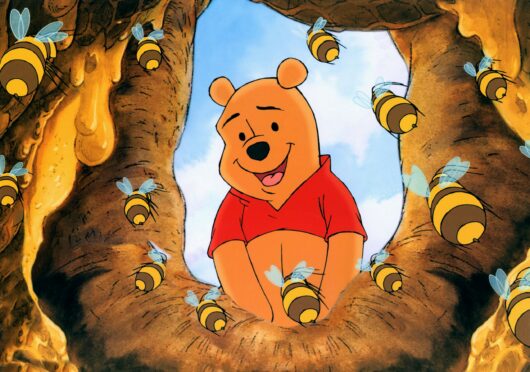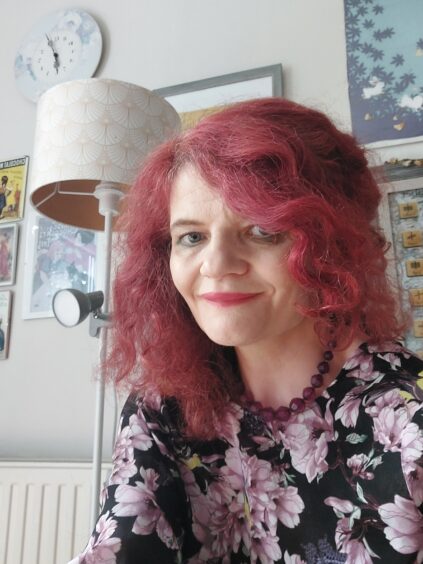
Wrapped in love, it was the birthday gift that would inspire one of the most beloved characters in children’s fiction.
One hundred years on, Sarah Dunnigan, English and Scottish literature lecturer at Edinburgh University, tells Tracey Bryce the Honest Truth about Winnie-the-Pooh.
Where does the Winnie-the-Pooh story begin?
He was a “real-life” teddy bear from Harrods which AA Milne and his wife, Daphne, gave to their little boy, Christopher, for his first birthday on August 21, 1921. Other much-loved characters from the Pooh story world, (apart from Owl and Rabbit) were also toys.
Pooh and his friends (except Roo, who was lost in an apple orchard in the 1930s!) later emigrated to America where they found a new home in New York Public Library.
What was the inspiration behind Winnie-the-Pooh?
Milne was a prolific and accomplished playwright by the time the Pooh stories were first published, but they were inspired by the stories which Milne told to his son, Christopher; like the seeds of inspiration behind so many children’s books, it started as a bedtime story.
The Disney films made Pooh and his friends famous, of course, but the books have this wonderful way of placing you right inside the tale, carrying you away to Pooh’s world in this lovely, playful, and vivid way.
You know that it’s a story; you can step outside but it’s always accessible.
And that’s really comforting to know when you’re a child – you can “climb back inside” whenever you want to find that little boy and his bear.
Can you tell us about the characters in the books and what they represent?
That’s one of the wonderful things about the stories – there’s a character for everyone, or at least they all represent a little bit of a recognisable personality, and their charm is partly their predictability.
Pooh is known as the Bear of Very Little Brain but he’s also a dreamer; an adventurer and brave. Eeyore the donkey is usually miserable and gloomy; Owl is the clever one; Rabbit is a bit imperious and bossy; and Kanga is very motherly. In a way, they all represent a more adult world.
There’s Tigger who’s lively and spirited, and tiny Piglet who’s very sensitive and timid, and many of the other characters are protective of him; along with little Roo, and Pooh, of course, they’re the child figures.
And though they’re all different, they form a close-knit community of play and adventure. Christopher Robin is the only human who enters the animals’ world; he’s the outsider but it’s also quite empowering to have the child character as the authority figure. And, of course, he’s best friends with Pooh. The theme of friendship is fundamental to the books.
What was the inspiration behind Hundred Acre Wood?
This was based on a real place, Ashdown Forest in Sussex, near where Milne had bought a family home, Cotchford Farm. It’s a beautiful place you can visit and play Poohsticks on the bridge!
What is it about Winnie-the-Pooh that has stood the test of time?
The stories have such a child-centred perspective, and all the characters are so warmly and sympathetically drawn. Children can really identify with them as they navigate and experience the world around them.
It really communicates some of the wonder and also the vulnerability of being little in funny and touching ways. Pooh may have a “bothersome kind of day” but there’s always something to cheer him up by the end.
Pooh is very much about being in the moment. Children can connect with that appreciation of simplicity – but adults can, too.
Tell us about AA Milne – he wrote a lot more than just Winnie-the-Pooh didn’t he?
He was an incredibly prolific and wide-ranging writer which most people don’t realise.
He was a journalist; had a successful professional career as a playwright; he was a novelist and a poet.
The Pooh books brought him success and fame but this was bittersweet for Milne as it overshadowed all his other achievements.
Is it true that, despite his career as a writer, he actually graduated in maths?
Yes, Milne studied Mathematics at Trinity College, Cambridge, but it was his love of writing that won out. Interestingly, Lewis Carroll, author of the Alice books, was also a mathematician.

Enjoy the convenience of having The Sunday Post delivered as a digital ePaper straight to your smartphone, tablet or computer.
Subscribe for only £5.49 a month and enjoy all the benefits of the printed paper as a digital replica.
Subscribe